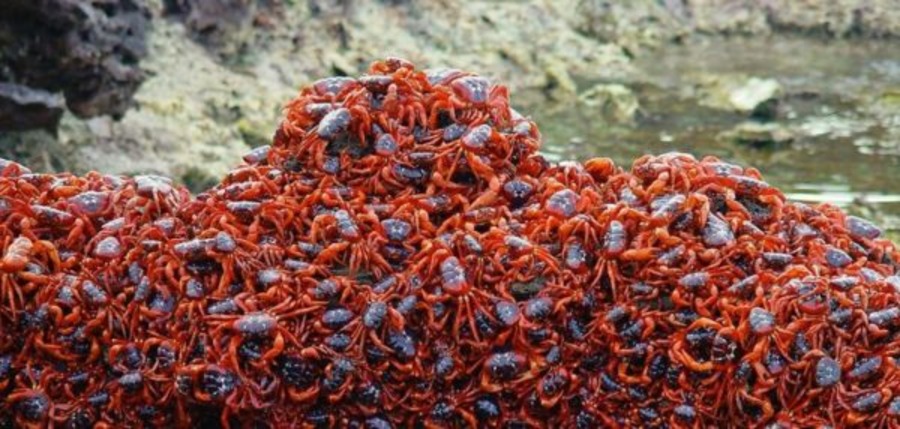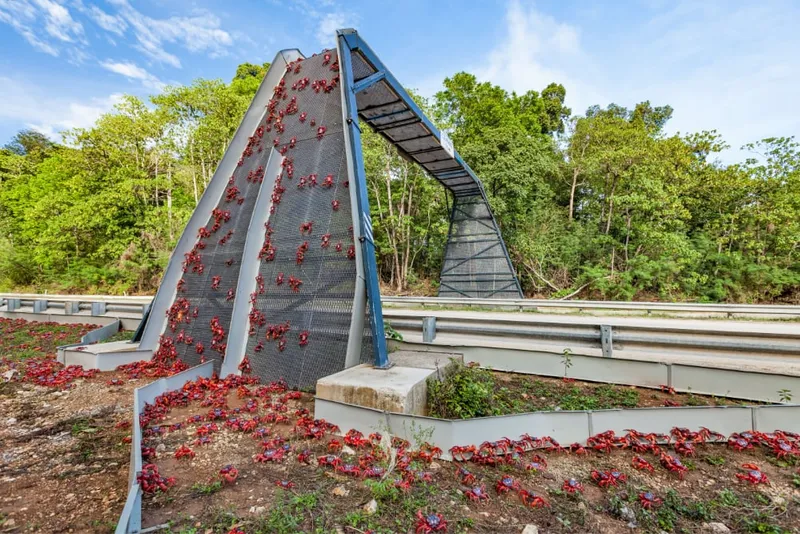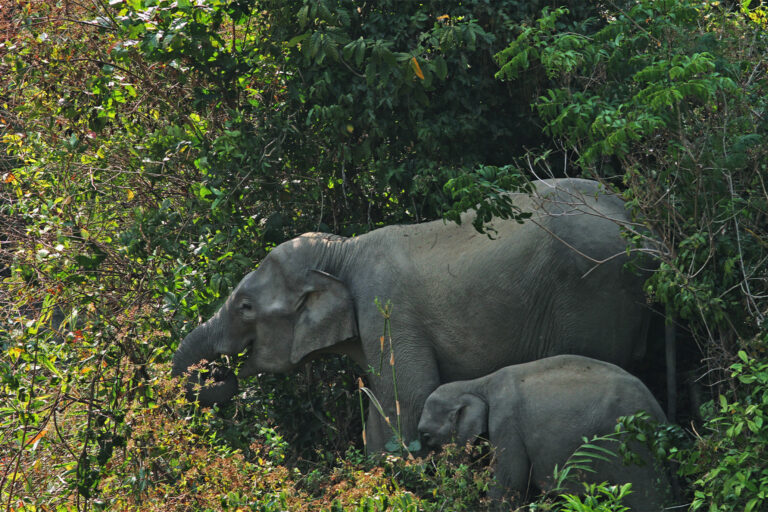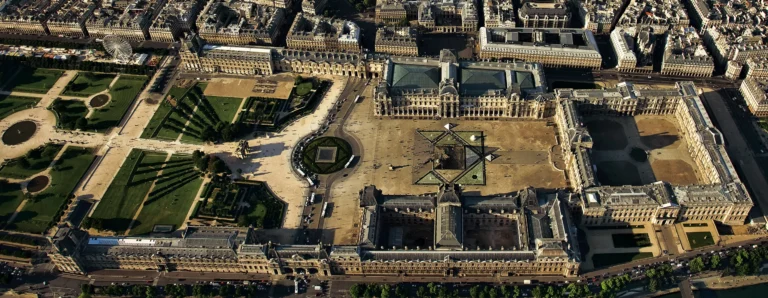
It’s that time of year when Christmas Island turns crimson. Millions of red crabs pour out of the forests in a spectacular, synchronized march to the sea, offering a glimpse at one of nature’s most breathtaking parades. Roads close, bridges rise, and the island blushes red. The annual migration of Christmas Island’s red crabs has begun, transforming this remote paradise into a moving sea of scarlet shells.
A March of Million Red Crabs
Every year, millions of large red crabs emerge from the forest and make their way to the ocean to breed, swarming across roads, streams, rocks and beaches. The march for 2025 has begun.
The migration begins with the season’s first rainfall, typically in October or November, though it can occasionally be delayed until December or January. At this time, red crabs across the island emerge from their burrows in unison, embarking on a mass journey to the ocean to mate and spawn. Leading the march are the males, with the females joining them along the route.
Traffic Stops for Nature
The red crab’s dominance of the landscape is an eye-catching phenomenon loved by tourists and treasured by residents. The annual red crab migration on Christmas Island causes temporary road closures and traffic disruptions as tens of millions of crabs cross roads to reach the ocean. To manage the situation, authorities close some roads during peak migration, and the community uses special barriers and “crab bridges” to funnel the crabs safely across human infrastructure, with local radio stations providing updates.
A Perfectly Timed Journey
The migration starts with the first rainfall of the wet season. The moon’s phases guides its timing and pace. Red crabs always spawn before dawn, coinciding with a receding high tide during the moon’s last quarter. Remarkably, they instinctively know when to leave their burrows to meet this precise lunar schedule.
Since the journey begins only after the first rainfall, the timing of the rains affects their movement. If the wet season starts close to the ideal spawning date, the crabs rush toward the coast. But when the rains arrive early, they travel more leisurely, pausing along the way to feed and drink.
If the rains come too late for them to reach the spawning grounds in time, some crabs remain in their burrows and wait to migrate the following month instead, according to Christmas land national park.

An Ecological Wonder
The annual spectacle plays a crucial role in maintaining the island’s ecosystem. Red crabs help aerate the soil, disperse seeds, and keep forest floors clean by feeding on fallen leaves.
The crabs dig burrows that help turn over and aerate the soil. As omnivorous scavengers, red crabs eat fallen leaves, fruits, and seeds, which are dispersed across the forest floor in their droppings.
Their feeding habits on fallen leaves and dead animals help clear the forest floor and recycle essential nutrients back into the soil. By eating seedlings, the red crabs also influence the types of plants that are able to grow on the forest floor.
This annual event is a spectacular natural wonder that draws tourists and scientists to the island, highlighting the complex and vital role the red crabs play in their unique environment.
A Global Attraction
The annual red crab migration is Christmas Island’s most spectacular event, attracting nature enthusiasts from across the globe. Tourists from around the world travel to witness how life on Christmas Island revolves around one of nature’s grandest migrations. The best spots to witness this natural wonder — including the migration and spawning — are Drumsite, Flying Fish Cove, Ethel Beach, and Greta Beach.
To safeguard the crabs, certain roads may be temporarily closed, sometimes without prior notice, during peak migration periods. Visitors can, however, park their vehicles and walk carefully among the crimson tide as the crabs journey to and from the shore.
You’ll also notice special crab bridges spanning the roads. These are the perfect viewing points to watch the steady, mesmerizing stream of migrating crabs.
As the tide rises and the forest floor empties, Christmas Island once again becomes a living canvas of movement and color — a vivid reminder that nature always keeps time with its own heartbeat. In a world often dominated by noise and rush, millions of crabs marching to the sea remind us that even the smallest creatures can move together in harmony and purpose.
For more such informative articles, stay tuned at The World Times.



